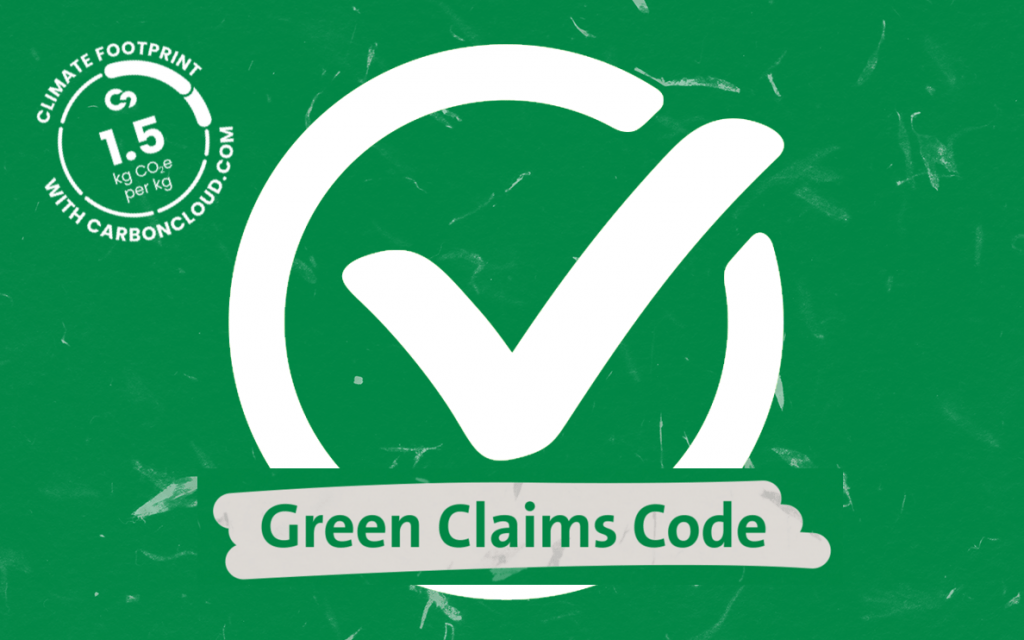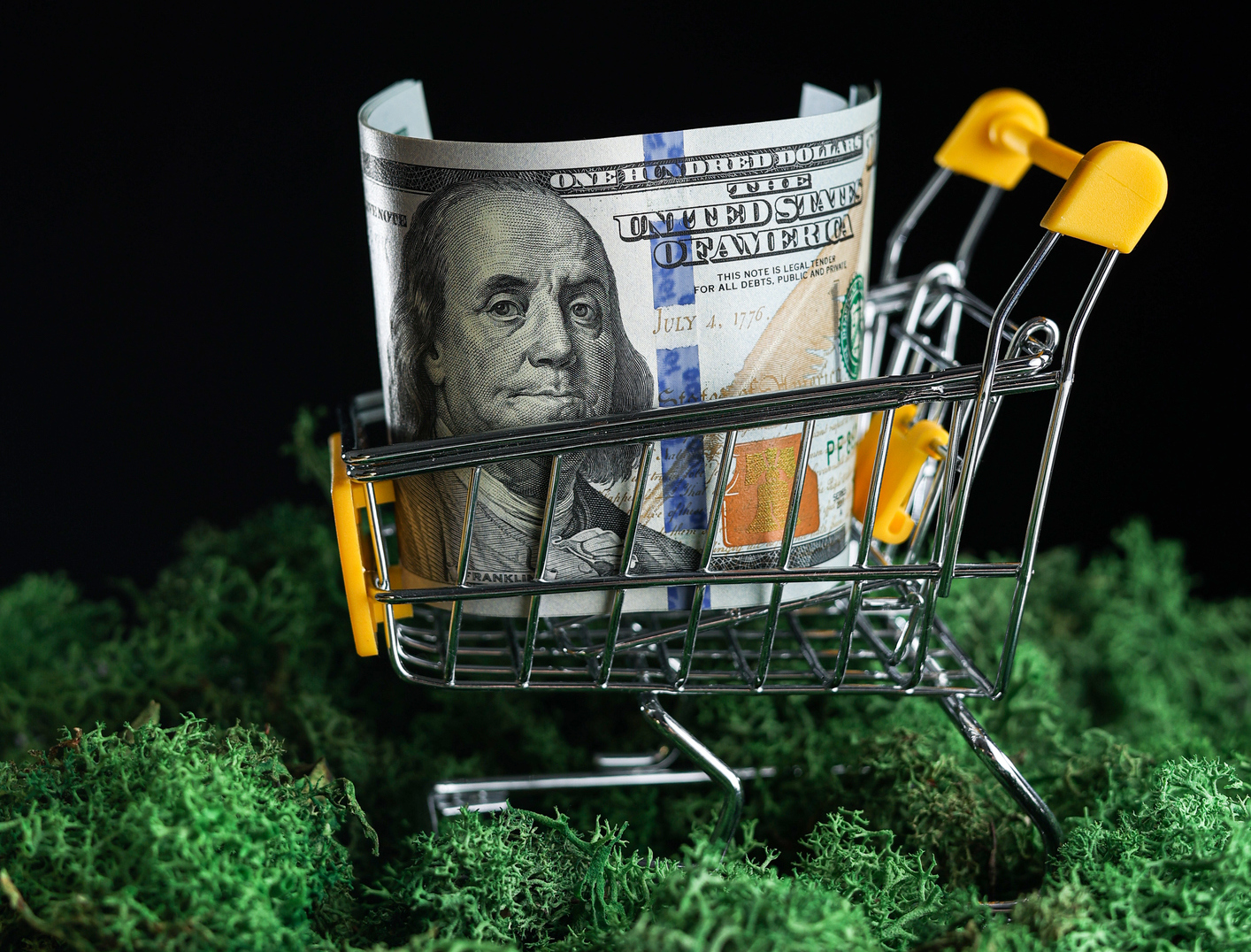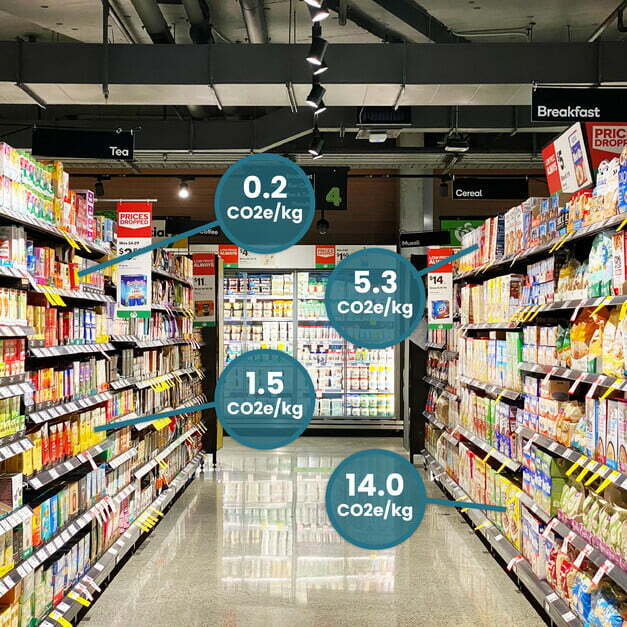🇬🇧 Green Claims Code: Unpacking environmental claim requirements
Last September, the Competition and Markets Authority (CMA) of the UK issued a guide on environmental claims. The guidance lists the requirements of what a product, brand, or service may claim regarding its environmental impact so that the claim is not misleading and helps consumers make informed choices. We cannot exclaim anything other than finally! We read the full guidance document for you and walk you through claims with CarbonCloud’s climate footprint.
From the get-go, climate-transparent food brands and product owners partnering with CarbonCloud can rest assured regarding their climate footprints. For starters, climate footprints from CarbonCloud are quantitative claims and the guidance document poignantly points out qualitative claims. We were in fact glad to see that the goals of the guidance align with ours: Help consumers make informed choices, ensure a level playing field and fair competition, and provide an incentive structure for meaningful environmental performance.
However, that does not stop us from doing a deep dive and expanding our collective understanding! In other words, we read the Green Claims Code so you don’t have to! The timing is on point as this January, the CMA has started reviewing potentially misleading claims. Do your claims check out?
Do you already know the Green Claims Code by heart? Jump into the CarbonCloud check-out section of the article!
Newsletter to-go?
Our special today is our Newsletter, including snackable tips, hearty climate knowledge, and digestible industry news delivered to your inbox
What does the Green Claims Code consider to be an environmental claim?
The CMA considers a claim to be environmental when it espouses that a product:
- has a positive or no impact on the environment
- is less damaging to the environment than a) a previous version of the product, or b) a competing good that interchangeably covers the same needs.
Who does the Green Claims Code apply to?
Any organization that makes environmental claims targeted toward consumers. It also applies to organizations that provide environmental certifications, as well as the B2B domain: Retailers, wholesalers, suppliers. So, if a product carries a misleading environmental claim, the retailer selling it is also liable.
However, it is important to keep in mind that the Green Claims code is not a regulation. It is, at this stage, guidelines.

What criteria should an environmental claim fulfill?
An environmental claim is considered genuine when it properly describes the impact of a product and does not hide or misinterpret crucial information. Once a brand decides to make an environmental claim, this claim will be assessed for compliance against the following criteria.
Environmental claims must be:
- Truthful & accurate
- Clear & unambiguous
- Transparent, i.e. not omit or hide important information
- Fair & meaningful, when a claim is comparative
- Considering the full life cycle
- Substantiated
1) Environmental claims must be truthful & accurate
While the first point seems self-evident, it often isn’t. The CMA points out that broader and general claims are at greater risk to mislead or being inaccurate. You can think of a general ‘eco-friendly’ claim, a green leaf on the packaging, but also the trickier ‘recyclable’ claim on a product that applies only to parts of the packaging.
Accuracy covers other gray areas such as framing a legal requirement as an environmental benefit, e.g. a ‘no microplastic claim’ when there is a national ban in effect on microplastics.
Finally, the claim must be as specific as possible regarding what it applies to: A specific product, a specific life cycle stage, a specific impact category. The CMA encourages specific, focused claims, even more so when they are formally verified by a third party based on publicly available internationally accepted methodologies. However, it points out that if the highlighted specific benefit has a negative implication in other areas, it may be misleading. Think as an example a product labeled as organic that does not state the potential negative implications in water usage.
2) Environmental claims must be clear & unambiguous
The CMA notes that the claim should be transparent, straightforward, and understandable to consumers. Conversely, it should not be framed in a way that makes it look like it performs better than it does.
This directive can easily turn gray. A company can disclose future goals if it has a verifiable strategy to deliver on them. In turn, the CMA states that ‘specific, short term and measurable commitments’ are less likely to be misleading.
Moreover, much like the requirement above, CMA does not consider general, all-encompassing claims such as ‘eco’ or ‘sustainable’ to be clear enough. More specifically, even in packaging disposal, the claims should state which parts of the package the claim applies to.
3) Claims must not omit or hide important information
Overall, the guideline suggests that the claims should not highlight a single favorable aspect and omit others. We cannot unpack this directive cannot without examples. An example the guide provides is a courier company claiming a 10% increase in electric vehicle investment but avoids disclosing that it is also investing 40% more in diesel vehicles.
Other sidenotes on this guideline include that information potentially omitted in a channel, such as the package, a billboard, or a digital ad, should be readily available in the same channel but in another format, such as a QR code or link close to the claim. For example, if you are making a carbon neutral claim in your billboard, the billboard should refer to the climate footprint of the product as well as the offsetting certification.
Additionally, companies should ensure that the content of the claims is kept under review and up to date with legislation, technological development, scientific advancement, production processes. Companies should also inform the consumers about any changes.
4) Environmental claims must make fair & meaningful comparisons
The CMA ensures here that any comparison is made on a level playing field and is relevant. The comparable information should derive from objective, verifiable and up-to-date information. Naturally, the presented information must be measured in the same way and with the same scope. This background should be accessible for verification. Comparisons are considered valid when it applies to products that can be used interchangeably, e.g. soy mince and beef mince.

5) Claims must be considering the full life cycle
When making an environmental claim, the CMA stresses that the claim needs to consider the full life cycle. Interestingly enough, the agency stresses sharply the importance of considering the entire supply chain and the impact of the different components or ingredients in a product, that are of interest to consumers.
This does not mean that your scope must necessarily be cradle-to-grave. It simply means that, if the claim is referring to a specific life cycle stage, it should be specified. If the claim is holistic or qualitative, then it should reflect the full life cycle and not omit stages. Finally, and this is the concern in focus of the guiding principle, a claim is considered misleading if it plays up on a minuscule part of the production.
The guidance notes:
Claims may be based on a specific part of an advertised product’s life cycle, or part of a business’s activities. It should be clear which aspect they refer to. They should not mislead consumers about the total environmental impact. Claims are less likely to mislead where they focus on aspects of a product, service, process or business that are most significant in terms of the overall environmental impact.
Let’s take packaging as an example. A bag of chips displays on the package 30% less packaging emissions*. The asterisk points to a small letter explanation compared to benchmark chips packaging. While this reduction is specific enough and may seem significant in this claim, it reflects only a 3.6% reduction in the cradle-to-shelf emissions of the product. It may be considered misleading since the most important life cycle stage, i.e. production of the chips, is not accounted for.
5) Environmental claims must be substantiated
As the guidance highlights as well, environmental claims stand out from other advertising claims as they are “ascertainable” matters with a scientific backbone. This means that consumers expect these claims to be based on evidence and as a result, said evidence should be available to consumers and enforcing agents.
Tying closely with the first guiding principle of truthfulness and accuracy, an environmental claim must therefore derive from robust, updated evidence that is based on scientifically accepted methods. When making a comparison with a competing product, evidence should be available for both products. Of course, covering the 3rd principle of comparability, the comparison should be based on the same scope of methodology.
I am with CarbonCloud! 🙋 Do my environmental claims check out?
Depending on your claim, yes, you check out! On a first level, CarbonCloud provides you with quantitative information on a product level. The climate footprint as well as the supporting structure of CarbonCloud back up your claim. Moreover, the climate footprint from CarbonCloud does not wrap a product’s impact on the climate in a marketing bow – it truthfully states it!

The climate footprint label
The label in itself is truthful and accurate (principle 1). Your ClimateHub page and report of the life cycle analysis serve as your substantiation for your claims (principle 6).
Moreover, the climate footprint states everything it should to be clear and unambiguous (principle 2): the quantification of emissions (XX kg CO2e) as well as the product reference (per kg of product).
As transparency is probably one of the reasons you choose to label, by definition it does not omit or hide anything (Principle 3). It is the transparent quantification of all the emissions related to the product in front of the consumers.
The label makes no comparison and no qualitative statement with any visual or verbal elements (Principle 4) e.g. green, climate-friendly.
Regarding the life cycle of the product (Principle 5), CarbonCloud’s scope is cradle-to-shelf. The label quantifies the most climate-impactful aspect of food systems – or 89% of the total emissions from food from a global perspective [1]. Moreover, it considers all activities attributable to the product until it reaches the store shelf.
All this information along with the full substantiation of the results can be found on your ClimateHub product page and ISO 14067 and GHG protocol Product Life Cycle Accounting and Reporting Standard compliant technical report. The methodology presented there has officially passed 3rd party validation when challenged. You can also refer to the same page, to display and substantiate real-time updates to your climate footprint with timestamps.
Is your knowledge of the climate footprint label shaky? We explain every element of the label here!
Climate footprint campaigns
If you choose to use your climate footprint outside the label, focus on your creative for validity.
Our clients often do benchmark campaigns and there are some points to keep in mind there:
- Make sure the benchmark product you are comparing your product to is interchangeable or serve a similar use.
- Be specific with your climate footprint references: Include your product’s name and the relevant information about the benchmark product. For example, if you are comparing the climate footprint of your pea-protein mince with that of beef, include the part of beef you are benchmarking against, e.g. Beef average, hamburger, ground beef 15% fat.
- For a fair comparison, choose products in the same market.
- Using CarbonCloud’s benchmark products for your comparison ensures that both products in your campaign are calculated with the same scope and system boundaries. You can substantiate this with your technical report.
- Linking to the ClimateHub pages of both products in your campaign cements your substantiation, accuracy, and traceability of your evidence, ingredients, and emission factors.
On the lookout for climate campaign ideas? Get some inspiration from our community here!
Broader environmental claims
CarbonCloud may not be the only arrow in your sustainability arsenal and you may want to broaden your message and combine your efforts. While this is fully understandable, it is the kind of direction Green Claims Code cautions food brands against. In cases of broader environmental claims, CarbonCloud can only verify your climate footprint claims, so make sure that you check the level of verifiability from your other vendors.
What we recommend is that you should, of course, proudly disclose your collective environmental efforts in your campaign, but aim to keep them specific and separate from each other. There are multiple benefits to this:
- You avoid the creative gymnastics of displaying all the sources that comprise your claim and hitting an accurate, scrutiny-proof presentation.
- Your claim makes sense to consumers, who are savvy enough to see and ask beyond ‘green’, ‘sustainable’, ‘eco’, ‘carbon neutral’.
- You appeal to niche interests and solidify the trust of your community and enforcing bodies.
- You check out – at least in climate impact claims!
If you choose to broaden your claim – and we cannot stress this enough – source, source, source! Providing references along your claim is both your shield as well as the badge of honor of your environmental work.
Are you a CarbonCloud community member with a campaign in the works? If you are still unsure, feel free to contact us and we can walk through your claims together!
Related Posts
Can a product be “carbon neutral”?
If the life cycle of a product leads to a net release of greenhouse gases, the product should not be referred to as “climate neutral” even if the emissions are compensated for with carbon offsets.
Sustainability claims: A 56% growth opportunity for food producers and retailers
Attributing sustainability claims to sales growth has been a year-long quest with loose results for the food industry. A new market report puts the quest to rest, providing 5-year-long evidence that s
Climate footprint labels: Why we use the number – and why the entire food industry will too.
The quantitative and specific climate footprint label may still be perceived as disruptive but we are certain that there simply isn’t a way that is more informative and transparent to communicate th
Can the food sector reach Net-Zero?
Net-zero seems to be the ultimate goal for the food sector – and the whole world for that matter. Pledges, commitments, targets live proudly on corporate websites and net-zero is now a long-term KPI







